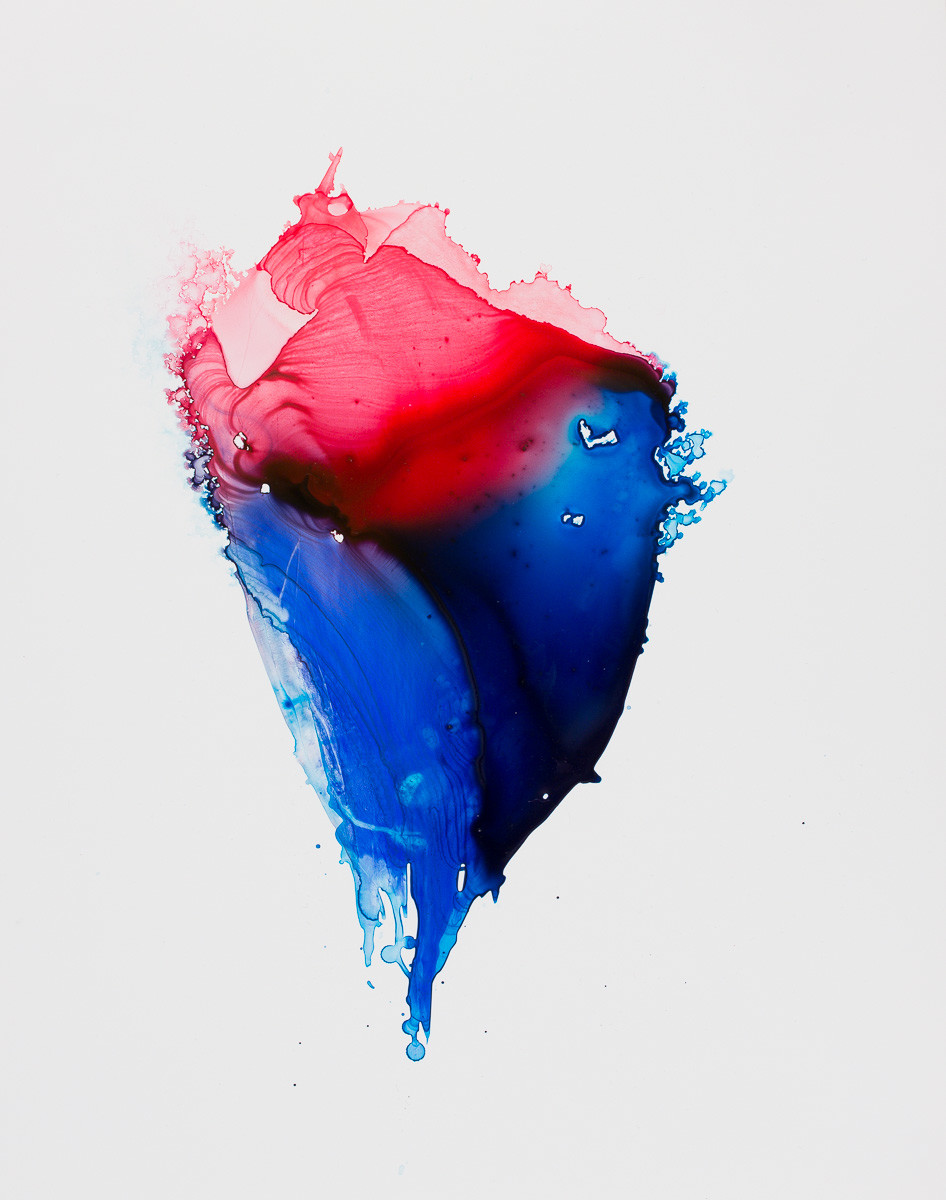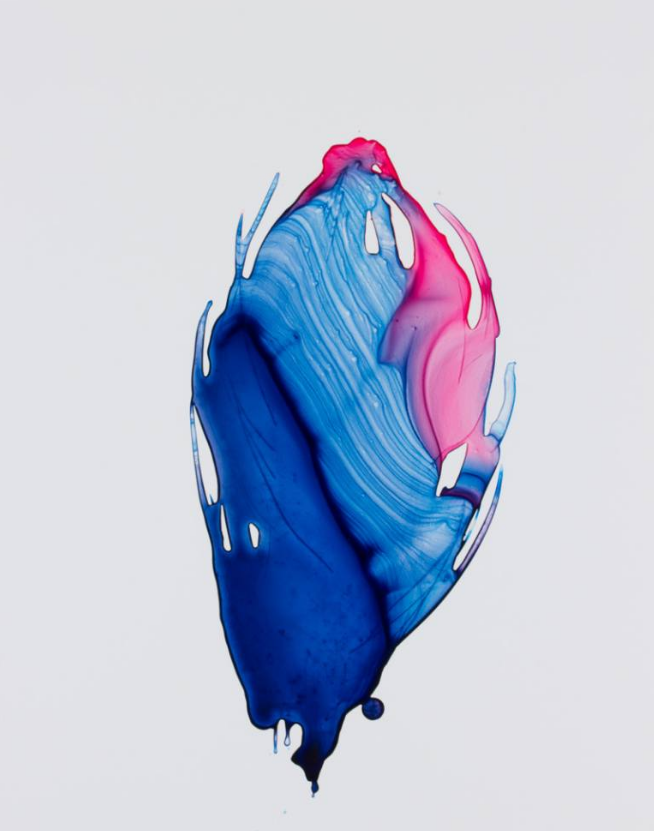CAITLIN G. MCCOLLOM
Photo: Steve Hopson
Photo: Steve Hopson
Photo: Steve Hopson
Talking to Austin visual artist Caitlin G. McCollom was fascinating. Back in April, I visited with her at Houston's Capsule Gallery on the opening night of her show, Fruits of Solitude. I learned that her conceptual approach focuses on the notions of existential absence and metaphysical searching. She is a profound storyteller of mystical symbols and as someone who is deeply influenced by spirituality, I found her work to be not only good-looking but also impressive. This is an artist who is deeply intentional. As we walked around the gallery, I heard her explain her exploration of color symbology, faith, and archetypical shapes. Our transcribed conversation below highlights her own personal visual interpretation of spirituality and physicality. I encourage you to read on and to absorb her deep contemplative methods of creating this unique work.
CG: I wrote an article on Capsule Gallery last year and I remember Sarah Sudhoff (the gallery's director) mentioning how much she enjoyed the freedom to exhibit and work with any artist who is willing to work with her. It's nice to see that vision come to fruition with your show. At first glance and with my knowledge of Capsule Gallery's previous shows, I immediately thought these works were photographs. But that isn't the case. What materials are you using? What is your process like?
CMCC: These are all hand painted with acrylic on polypropylene. Some people say they look like photographs or digital creations but no, they are all painted with a paintbrush in my studio. Polypropylene isn't paper at all, it's actually plastic! The material is ultra smooth and nonabsorbent. What you see is a chemical process that I developed: the acrylic paint (with its plastic binder) fuses with the plastic paper and as the water evaporates off the surface, the color pigment sits on the surface. That's why they're so vibrant. If these were watercolor paintings, the work would be very dull. Also because polypropylene is so smooth, I can create these super delicate lines.
CG: Can you describe your relationship between red and blue? That is something I noticed immediately with your work. Do they transform with each other? What is your interpretation of these colors?
CMCC: This one is called The Thick Red Sea. The concepts of red and blue that I am working with are symbols of spirituality. Red being blood and physicality. Blue being water and spirituality. Visible realm and invisible realm. The Thick Red Sea, like the Bible story on the Red Sea, is this moment where the physical and the spiritual are intertwined. The sea is parted and Moses and the people have to walk straight into it. It is a moment of spiritual reckoning that is also very physical. I think about that with the human body. There can be moments where we are extremely aware of the invisible realm (blood as a life force). I create different shapes, colors, and symbols that are specific stories I want to tell.
Throughout the series, I am mixing realms.The Burning Bush is a religious symbol that has the connotation of colliding nature with human life and God.
CMCC: The Sovereign Black Tongue. Tongues are another place where physicality and spirituality can meet. I am Catholic and the Eucharist is a very powerful experience for me. It is a moment of collision, the body of God connects to the human body. It is a source of life. I've had a strong mystical connection to the Eucharist for many years now. I also admire the symbolism of the tongue itself. This tongue is black, it represents darkness. For example, how many times do you say what you think that you are supposed to say? How many times do you rehearse a conversation in your head before you say it? The tongue is sovereign.
CMCC: This one, Twin Souls, is about how sometimes in life you meet someone that has intense physical or spiritual experiences that you can relate with. You feel really close to them, but you can't commune with them in a way. There is still a separation present. Two people come together and are able to see each other but there's a frustrating space between them. It isn't perfect. Adding onto that, the white background in my work represents the unknowable space that surrounds everything. It is really important to me to have that stark space around my work.
CMCC: This work, Awakening, obviously contains a lot of blue which to me, means something spiritual. Many people call these the donut paintings which I think is pretty funny. They are actually supposed to be loops with holes in the middle. Representing the frustrating hole at the center of our being, this work not only highlights what is "missing" from our bodies but also physically our skin has a hole in the middle which has tubes that lead to more holes. All of our body has another space for something else. I enjoying making loops to represent that.
CMCC: These works are the Demon Heart (L) and the Flooded Heart (R). Both of them represent renewal. The Demon Heart is more about a frustrated heart and the Flooded Heart is more about a renewed heart. I'm interested in the divine mercy, a devotion that refers to the unlimited merciful love of God towards all people, as well as the mystics and how they interpret the world.
CMCC: The largest work in the show, A Cloud of Unknowing Within Your Tears, represents the sorrow of life, blood and water mixing. In a way it also represents the frustration one has within their spirituality. In mystical text, the Cloud of Unknowing is known as being the only way to have a chance of experiencing God. To experience it, you have to release yourself to this realm of the unknown. It is a great collision that allows us to go deeper and deeper until we release ourselves to the higher power. If you toil to try and understand the world, it leads you nowhere.
CG: Tell us why you chose Fruits of Solitude as the title of the show.
CMCC: I am interested in the contemplative tradition. I spend a lot of time alone, reading and writing about these ideas and concepts. I go into these frenzies of creation where I am in my studio for hours and hours making dozens of paintings. These works are from three different series and Fruits of Solitude represents all of those ideas together. The majority of this work is primarily from my last series, A Silent Exorcism. We know that an exorcism means extracting evil from oneself or someone else. For me, it was about my own contemplative process and extracting evil and how that has become a focus for me. Wherever you find evil in yourself, I think it is important to kill it. These paintings help me understand and interpret that.








